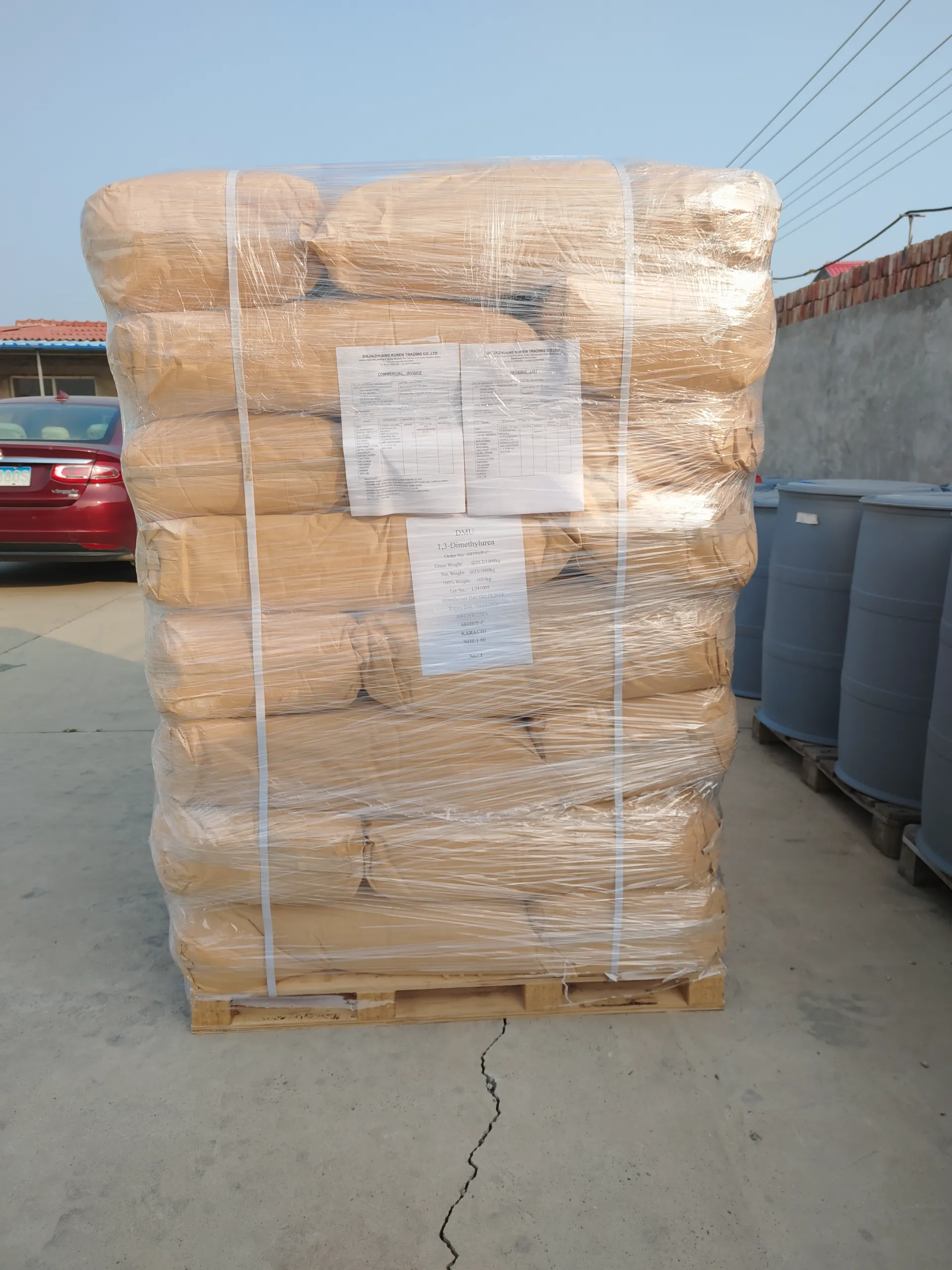1 3 dimethylurea provides a feasible formaldehyde-free substitute for fiber treatment and crosslinking in textile industry. It can enhance the fabric performance and reduce the health risks caused by formaldehyde, which makes it the best choice for manufacturers committed to sustainable development and safety.

Advantages of 1 3 Dimethylurea
Formaldehyde-free
One of the most remarkable advantages of using 1 3 dimethylurea is its formaldehyde-free property. As we all know, formaldehyde is a strong irritant and a potential carcinogen. Its use in textiles has attracted the attention of consumers and regulators. By choosing 1 3 dimethylurea, manufacturers can produce fabrics that meet health and safety standards without affecting their performance.
Biocompatibility
Compared with formaldehyde-based reagents, 1 3 dimethylurea is relatively non-toxic. Its biocompatibility makes it suitable for applications that frequently contact with human skin, such as clothing, interior decoration and bedding.
Multifunctional Application
Cotton and cellulose fiber: It can enhance the performance of natural fiber by improving durability and water resistance.
Synthetic fiber: 1 3 dimethylurea can also be applied to synthetic fiber to help improve its physical and chemical properties.
Improved Fabric Properties
Studies have shown that fabrics treated with 1 3 dimethylurea show enhanced properties, such as:
Improve the tensile strength: Crosslinking improves the tensile strength of the fabric and makes it more durable.
Waterproof: The treated fabric can repel water more effectively, which is beneficial to outdoor and performance wear.
Stain resistance: This treatment can also give the fabric stain resistance, making it easier to clean and maintain.
Application of 1 3 Dimethylurea in Textile Processing
1 3 dimethylurea can be used in all stages of textile processing, including pretreatment, dyeing and finishing.
Pretreatment
In the pretreatment stage, 1 3 dimethylurea can be used to change the surface properties of fibers and improve their acceptability to dyes and finishing agents. This can improve the color absorption and uniformity of dyed fabrics.
Dyeing Process
In dyeing applications, 1 3 dimethylurea can help to achieve better dye fixation by establishing a more stable bond between dye molecules and fibers. This leads to brighter colors and improved washability.
Finishing Treatment
1 3 dimethylurea is also valuable in finishing treatment, which can provide additional properties, such as:
Wrinkle resistance: The fabric treated with 1 3 dimethylurea can resist wrinkle, enhance its appearance and reduce the need for ironing.
Antibacterial properties: When combined with antibacterial agents, 1 3 dimethylurea can help to produce fabrics that inhibit the growth of bacteria, fungi and other microorganisms.
Environmental Factors of 1 3 Dimethylurea
Switching to 1 3 dimethylurea as crosslinking agent is also in line with broader environmental goals. The reduction or elimination of formaldehyde in textile production significantly reduces the possibility of air and water pollution. In addition, 1 3 dimethylurea is considered to be more biodegradable than traditional formaldehyde-based reagents, which further reduces its impact on the environment.
With the increasing demand of consumers for safer textiles, the adoption of 1 3 dimethylurea may play a key role in shaping the future of textile production. Continuous research and development is very important for maximizing its potential, optimizing processing methods and expanding its application in the whole industry.
As a key pharmaceutical intermediate, 1,3- dimethylurea has a broad development space in the future pharmaceutical intermediates market, and its importance in the research and development of new drugs will continue to increase and become an important force to promote the progress of the pharmaceutical industry.

